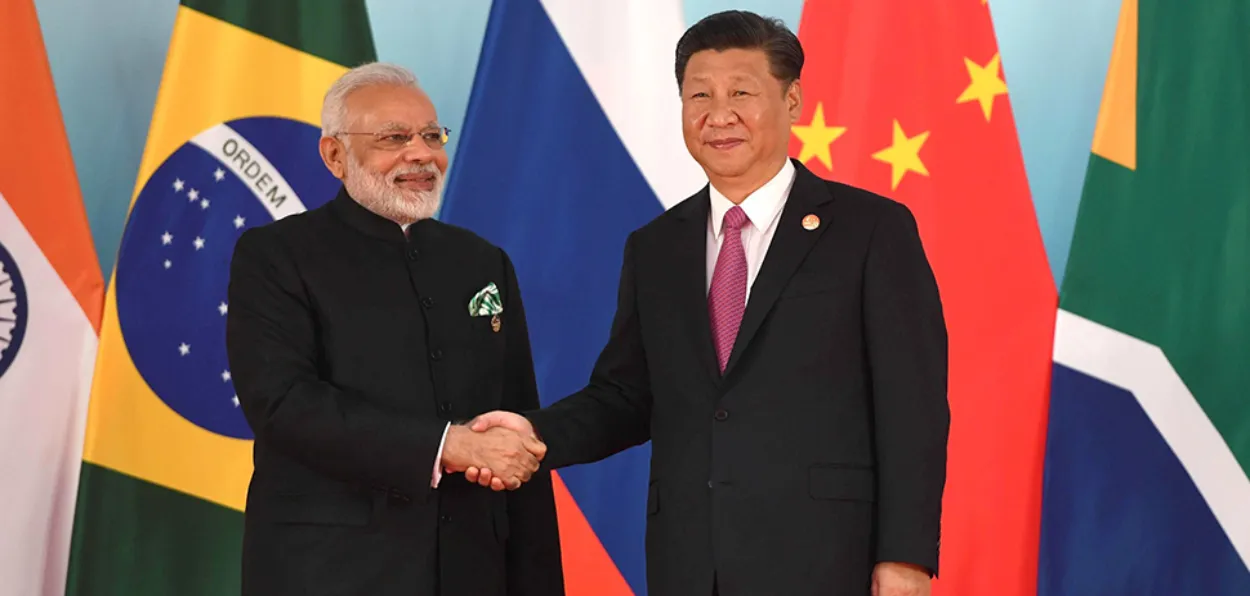
This article examines whether it's possible to plug India into the global supply chain without plugging itself into the Chinese supply chain and how can India strike a fine balance between importing goods and importing capital from China.
 Sushma Ramachandran
Sushma Ramachandran
As India seeks to become part of global supply chains, it faces numerous challenges especially related to the dominant role of China. It is in this context that this year’s Economic Survey touched upon the need to take a more pragmatic view of policies related to investments from that country. This will require a review of existing strategies aimed at keeping capital inflows at a minimum, even after the border clashes that took place during the pandemic. It is now felt that a more liberal approach is needed as the alternative can only be an exponential rise in imports.
Recent media reports, for instance, are showing that India’s reliance on China for electronic components needed to assemble products ranging from televisions and laptops to mobile phones has been expanding rapidly in recent years. Commerce Ministry data shows that over 50 percent of such imports are being sourced from China and Hong Kong. And such imports have remained consistently at this level over the past five years. This data indicates that the questions raised in the Survey over the Chinese pre-eminence in critical manufacturing sectors and the difficulty faced by emerging economies like India in catching up need to be considered realistically.
State of Economy
The Survey pointed out that Chinese dominance over global supply chains was an area of concern, especially after the disruptions caused by the Ukraine war. It cautioned that it may not be the most prudent approach to think that India can take up the slack from China vacating certain manufacturing spaces. It had then raised two questions. The first was whether it was possible to plug India into the global supply chain without plugging itself into the Chinese supply chain. The second was on seeking the right balance between importing goods and importing capital from China.
The Survey went on to cite the cases of Brazil and Turkey which have raised tariffs on import of Chinese e-vehicles while simultaneously taking steps to attract Chinese investment in the same sector. It argued that India, which has to make similar hard choices, could replace imports with investments that would create domestic know-how down the road.
In other words, this country should seriously examine the prospect of opting for Chinese foreign direct investment (FDI) despite the chilly bilateral relations and persistent border tensions. At first glance, the prospect of inviting investors from a country that has for long been viewed suspiciously as the enemy, seems a doubtful proposition. The hard reality, however, is that the northern neighbour is already playing a big role in this country’s economy.
The presence of Chinese companies is evident to all, especially in the high-profile area of mobile phones, but there is little reliable data on the precise numbers. One Chinese agency estimated a few years ago that there are about 430 companies over here. It is obvious, however, that Indian consumers are familiar with many brand names including Lenovo, Xiaomi, OnePlus, Vivo, Haier, and Huawei. In recent years, however, it has become increasingly difficult for companies from China to make fresh investments, given the restrictions imposed after the border clash at Galwan in 2020.
This included the release of press note number three, which imposed curbs on investments from neighbouring countries. It stipulated that companies based in countries sharing a land border with India could invest only after government clearance and the automatic route was no longer available.
This negative attitude has altered quite a bit since then for various reasons. A significant one is that multinationals shifting projects here under the China Plus One strategy are finding it difficult to get visas for technicians needed to get them underway. Other projects that are part of global supply chains also need to bring in machinery and personnel from China to get off the ground. The delays are reported to be causing huge financial setbacks in several industries. The government has had little option but to ease restrictions and a portal has even been created to facilitate the process for short-term business visas.
It is against this backdrop that the Survey’s questions need to be given careful consideration. On the first one of plugging India into global supply chains, it is clear the aim cannot be achieved without becoming enmeshed in Chinese manufacturing systems. The only other option would be to stay away from global supply chains altogether. This would be a huge setback to this country’s efforts to become a global manufacturing hub.
The second question regarding importing capital is more sensitive to the overall aspect of national security. Yet the fact is, that allowing FDI from China in a regulated and monitored fashion is a far better prospect than blocking this route. It would ultimately have a beneficial impact in the long run in terms of technology transfer and ensuring greater value addition in key industrial sectors. The alternative of simply continuing to import critical components and equipment from China in increasingly large volumes is certainly not a desirable one.
It should also be possible to monitor the areas in which such FDI is allowed to ensure that strategic areas like telecommunications are kept out. There is a wide range of areas where the inflow of technology and capital can provide support but does not necessarily affect strategic interests.
ALSO READ: J&K elections: Pakistan quietly gobbled Gilgit-Baltistan much before Art 370 abolition
It is therefore time to adopt policies that have been successfully implemented by other emerging economies about this economic superpower. Higher tariffs can continue to be imposed on imports that need to be curbed while investments in the same area can be allowed into the country. As the Survey has rightly noted, this may not be the best policy but in an unequal world, one sometimes has to make do with second and third-best choices.
